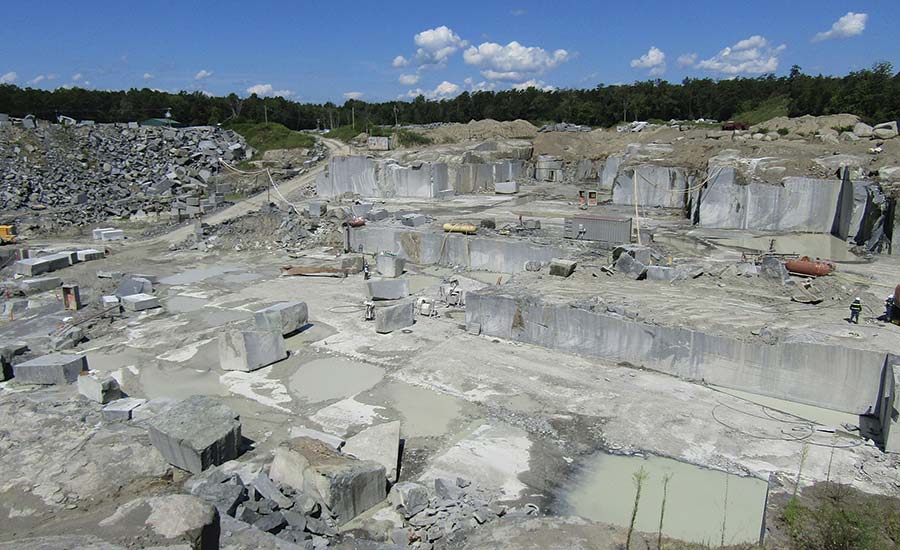The Hidden Gems: Exploring Granite Quarries in South Africa
Introducing the Mysteries of Granite Quarrying: Where Strength and Sophistication Meet
The globe of granite quarrying is a realm where the raw strength of nature assembles with human virtuosity to create structures that stand the test of time with an air of style. From the depths of quarries to the thorough sprucing up in workshops, the process of transforming granite into building wonders is an intricate dancing of tradition and development. As we peer right into the midsts of this ancient craft, we start to reveal the surprise intricacies that shape the very essence of our developed atmosphere.
The Beginnings of Granite Quarrying
In the record of building background, the origins of granite quarrying are shrouded in a tapestry of ancient craftsmanship and geological marvels. Dating back to ancient Egypt and Mesopotamia, the extraction of granite from quarries marked the beginning of a journey that would eventually result in the creation of some of the globe's most legendary frameworks.
Granite quarrying's roots can be mapped to the competent artisans who acknowledged the rock's toughness and visual allure. Via a mix of primitive devices and large resolution, these very early quarry workers discovered granite blocks that would come to be the foundation of human beings.
As human beings advanced, so did the strategies of quarrying granite. The Romans, renowned for their design prowess, developed advanced approaches for removing granite to build monuments, temples, and roads that stood the test of time.
The heritage of these old quarrying methods continues to form contemporary design, with granite remaining an icon of toughness and beauty in building tasks around the world. (granite quarries in south africa)
Tools of the Quarrying Profession
The development of granite quarrying techniques from old people to contemporary times highlights the important function played by the tools of the quarrying sell shaping the market's techniques. In ancient times, quarrying tools were basic, frequently including blades, hammers, and wedges made from products like bronze or iron. These tools required considerable manpower and time to remove granite blocks from quarries.

Additionally, the introduction of pneumatic tools and high-powered machinery has actually considerably decreased the physical labor required in quarrying operations, enhancing worker safety and performance. As the quarrying industry proceeds to get more innovate, the tools of the trade remain at the center of driving progression and forming the future of granite removal.
Drawing Out Blocks of Granite
Using precision equipment and advanced methods, the extraction of granite obstructs from quarries has actually come to be an innovative procedure in the contemporary quarrying industry. The first action includes determining the location and dimension of the granite down payment to identify the most reliable removal technique. Once an ideal site is selected, the removal process begins with the drilling of openings for the placement of explosives. Regulated blasting strategies are after that employed to damage apart the granite into manageable areas.

Polishing and Finishing Strategies
To accomplish a remarkable surface on granite blocks, skilled artisans use a series of careful polishing and completing strategies. After the initial removal and forming processes, the granite obstructs undertake a complete polishing stage to enhance their natural appeal and resilience.
Along with polishing, completing strategies are related to additional improve the granite's appearance. These methods might consist of flaming, developing, or brushing, each offering distinct structures and coatings to suit different aesthetic choices. Flaming, as an example, involves subjecting the granite surface area to heats to create a rough, textured surface, ideal for outside applications where slip-resistance is crucial. Developing, on the other hand, supplies a matte coating that is smooth to the touch, excellent for indoor counter tops and flooring. By very carefully picking and using these brightening and ending up techniques, artisans can transform raw granite obstructs into exquisite items that display both strength and elegance.

Ecological Effect and Sustainability
With the growing focus on environmental consciousness in the sector, granite quarrying methods are significantly scrutinized for their effect on natural sources and lasting sustainability. Quarrying for granite can have considerable ecological implications. The extraction procedure frequently includes the use of hefty machinery, nitroglycerins, and big amounts of water, leading to habitat devastation, dirt erosion, and water contamination. In addition, the transportation of granite from quarries to processing facilities creates carbon emissions, even more adding to environmental destruction. granite quarries in south africa.
To reduce these influences and make certain sustainability in granite quarrying, sector stakeholders are adopting various steps. Carrying out sophisticated innovations to minimize power intake and water use, recovering quarried land for environmental repair, and advertising accountable sourcing methods are some methods being see post utilized. Certifications such as the Forest Stewardship Council (FSC) and the Leadership in Power and Environmental Layout (LEED) assistance consumers identify eco pleasant granite products.
Conclusion
To conclude, granite quarrying is a process that requires specialized devices and techniques to remove blocks of granite and polish them to a high degree of surface. While the environmental influence of quarrying can be considerable, initiatives are being made to enhance sustainability practices in the sector. In general, granite quarrying is a fragile balance in between utilizing the strength and sophistication of this natural rock while minimizing its effect on the environment.